Serbian spruce: popular varieties and tips for growing
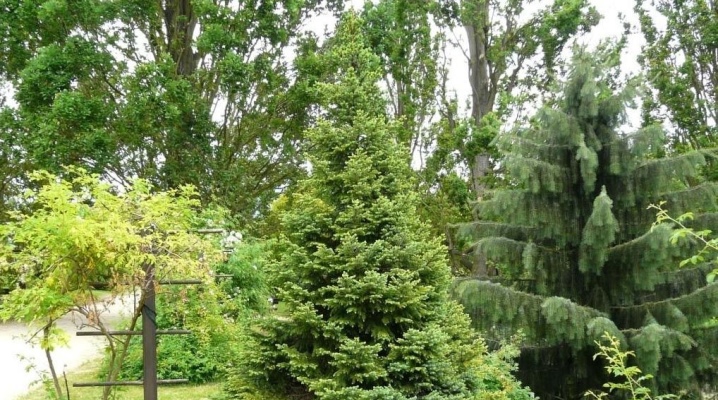
Many varieties of spruce, such as Serbian spruce, fit perfectly into almost any landscape. Trees are often planted around the perimeter of the site in order to beautifully decorate the area and give it a more natural (natural) look. Spruce is grown next to the house or in the back of the yard near the fence. Serbian spruce attracts attention with its unique structure and appearance.
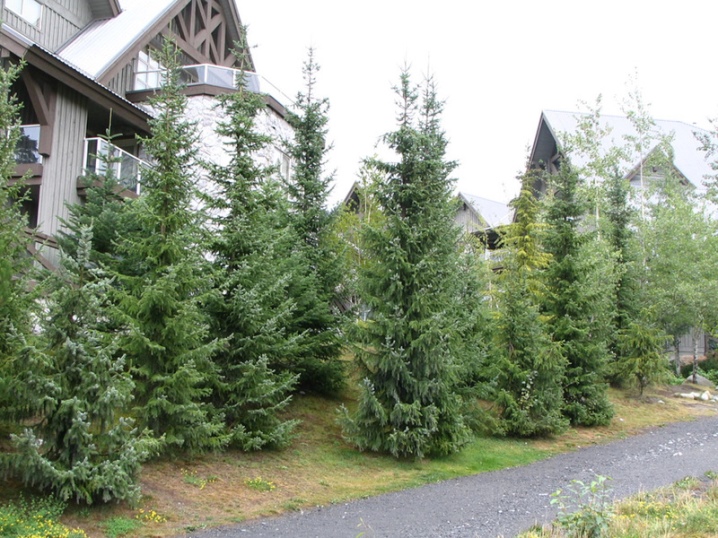
This coniferous tree can reach 50 m in height, has a narrow pyramidal or columnar shape with a pointed crown. The bark of the tree is quite dark, the branches are brown. The natural zone of growth of culture covers Western Serbia and Eastern Bosnia - mountainous regions at an altitude of 800 to 1600 m above sea level. The area occupied by this zone is 60 hectares.
Serbian spruce has been used in landscape design since 1880 due to its decorative properties and resistance to external factors. For example, this variety is not very susceptible to harsh winters, survives in a polluted urban environment.
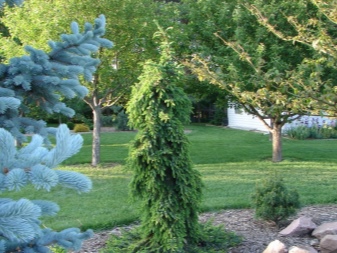

Description
In total, up to 30 varieties of Serbian spruce can be found in nature (another name for the species is "omorika"). It differs in the size and shape of the crown, as well as in the color of the needles. Serbian spruce belongs to a rare species of the Pine family, which is relatively widespread in the cultivation of spruces. When choosing a Serbian spruce for growing on your site, you should focus on its botanical description in order to follow the general design of the area.
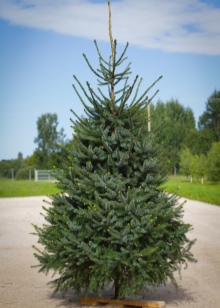
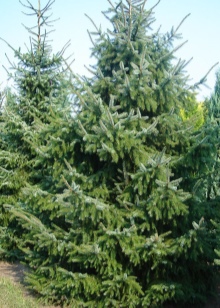
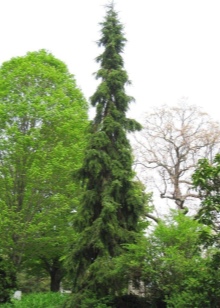
An evergreen tree, on average, reaches a height of 20 m to 35 m, with a trunk diameter of up to 1 m. A characteristic feature of such spruces is their narrow crown and raised short branches. Spruce needles can be up to 20 cm long. Their color is interesting: on top the needles have a blue-green tint, and on the bottom - silvery or blue-white. On the trees, cones ripen 4-7 cm long, dark brown in color.

Serbian spruce plays an important role in gardening, as it is able to adapt to different soils and decorate any landscape around. In North America and Europe, trees have long been valued for their hardiness, growth rate and quality wood. In forestry, the cultivation of Christmas trees is given special importance on the eve of the New Year holidays.
Spruce grows quickly, as it has a strong root system.
Omorica conifers have many advantages. Ate long-livers in the wild can live up to 300 years. For 30 years, tall varieties are able to reach 15 m, adding 50 cm in height annually. Beautiful spruce trees are distinguished by their grace and harmony at any age. The cones, which appear on the lush crown at the twelfth year of life, give even greater decorativeness to the Christmas trees. They have a dark brown or purple-violet hue and do not fall off from strong winds.
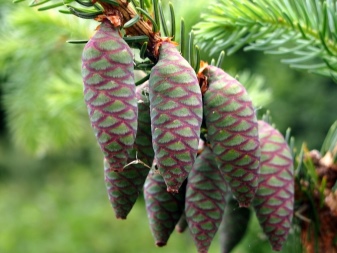
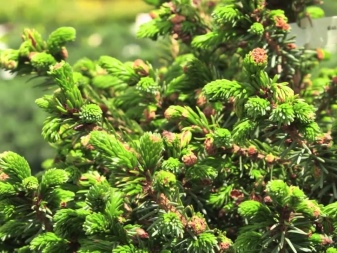
The popularity of the Serbian spruce (Picea omorik) among gardeners and landscape designers is explained not only by its decorativeness, but also by its undemanding care. Landings look spectacular in a wide variety of compositions. Omorica is often included in the design of hedges.

Types and varieties
All varieties of Serbian spruce take root well in mid-latitudes, regardless of the quality and type of soil - podzolic, acidic and sandy. However, the plant does not tolerate highly moist soils.Before buying a spruce, one should also take into account the fact that different varieties of omoriki may differ in size and height, which is important in a personal plot. In larger areas, whole plantings of these conifers can be broken.
Among the varieties of Serbian spruce, there are the most widespread and popular. Let's dwell on them in more detail.
- "Pendula". Picea omorika Pendula works well with other group trees. Has a unique curved barrel shape. The tree can grow up to 10 m in height and looks good in the garden or park. It is characterized by a dense fluffy crown and branches tightly adjacent to each other.
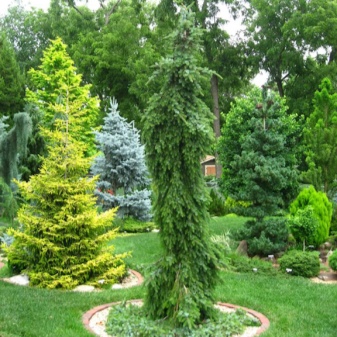
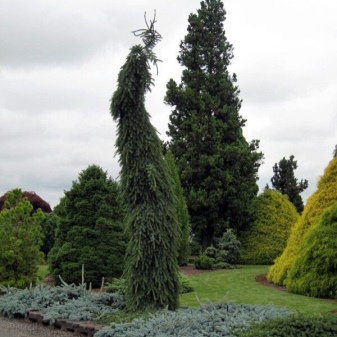
- Pendula Bruns. Another representative of omoriki. In comparison with its counterpart, the tree reaches no more than 5 m in height and has a straight trunk. But the crown of the spruce is narrower, pyramidal.

- "Nana". This variety of spruce is notable for its small size, growing only up to 4 meters in length. However, in landscape design, this type of conifers looks organic and appropriate.
This is one of the slow-growing varieties of spruce that requires abundant watering during particularly hot periods.
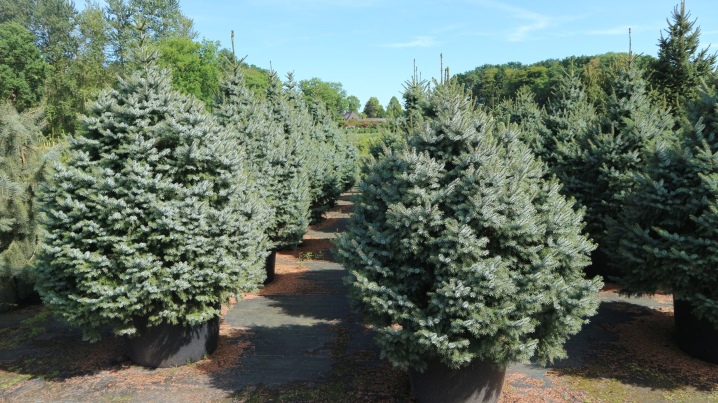
- Freya. One of the most unpretentious spruce varieties. It grows in any conditions, but loves more sunny areas. It grows rapidly, reaching a height of 20 m.
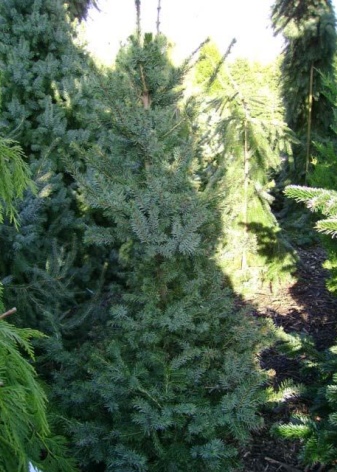
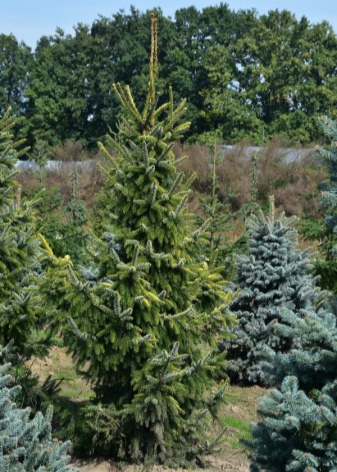
- "Karelian". This variety is one of the smallest in size. Trees calmly withstand frosts down to -30 degrees. Fir trees grow up to only 80 cm in height, which makes them look like shrubs. Many gardeners love this "effect" in landscaping.
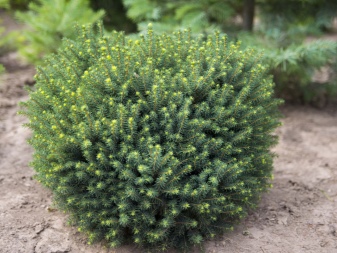
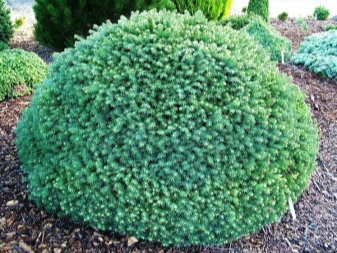
- "Aurea". Another medium-sized Serbian spruce reaches 12 m in height. At the same time, the growth of spruce is quite intensive - about 30 cm per year. This variety is perfect for single plantings of needles. The plant is characterized by a yellow-green color of the needles.
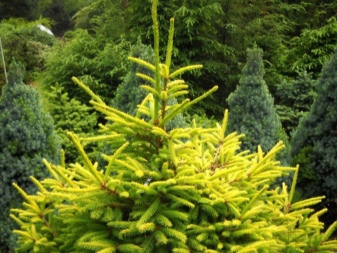
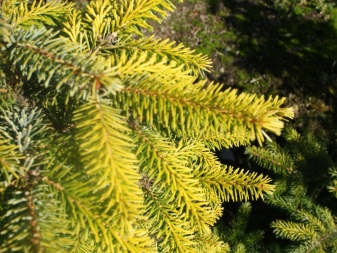
- Pimoko. This is a more decorative dwarf variety of spruce with interesting two-colored needles - the needles are dark green on top and grayish blue on the bottom. Mature plants grow up to 0.9 m in height. Planting is distinguished by lush dense vegetation with a conical or spherical crown. Can be planted in shade and in cold climates.
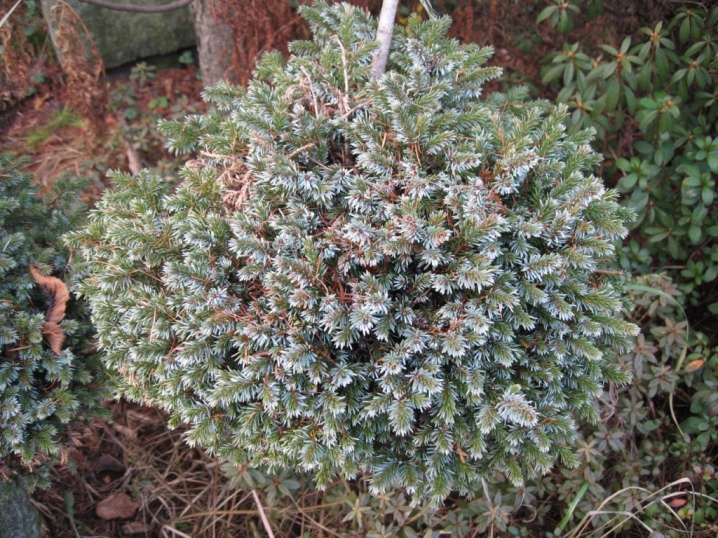
- "Wodan". Also quite an interesting variety for the middle lane. It belongs to dwarf decorative varieties of conifers, reaches about 1.5 m. The crown of trees is wider in proportions, up to 50 cm in girth.

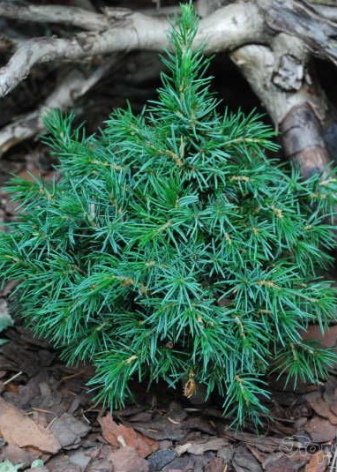
No less popular varieties in landscape design are:
- Peve Tidjin;
- Pendula Cook;
- "Alexandra";
- "Linda";
- "Jellyfish";
- Rother Austreb;
- Zuckerhut.
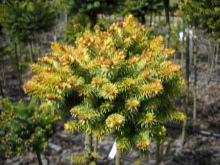


All types and varieties of Serbian spruce (omorika) are distinguished by their unpretentiousness when grown in a variety of conditions. Therefore, Christmas trees can often be seen in city parks and squares.
In gardening, depending on the size and shape of the crown, Serbian spruces are grown as independent plantings or in compositions with other conifers, for example, when decorating hedges and alpine slides.
Selection recommendations
Almost all varieties of Serbian spruce can be used in the middle and northern latitudes. For example, most of them are suitable for the Moscow region. For to grow a beautiful spruce on your site, you should choose the right seedlings.
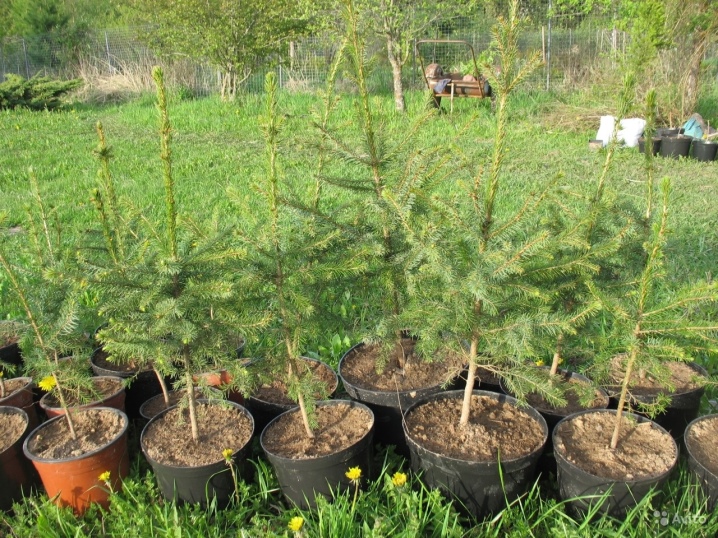
The choice of the variety is due to several criteria: the height of the tree, the width of the crown, the color of the needles and cones, the possibility of growing in a given area (no obstacle to the normal growth of seedlings).
You should buy seedlings closer to spring, when planting time comes. To avoid surprises, you should trust the specialists and purchase healthy plants in special nurseries. There, the trees grow in open ground, which favorably affects the adaptation of the seedlings to the new planting site. Nurseries offer two types of seedlings: open-root or closed-root.
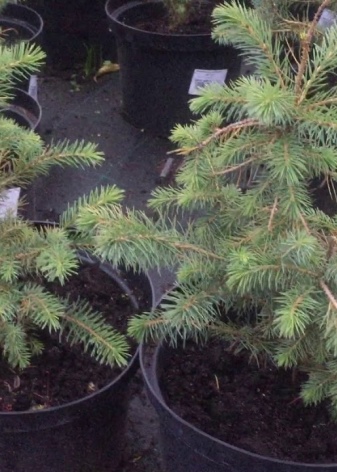
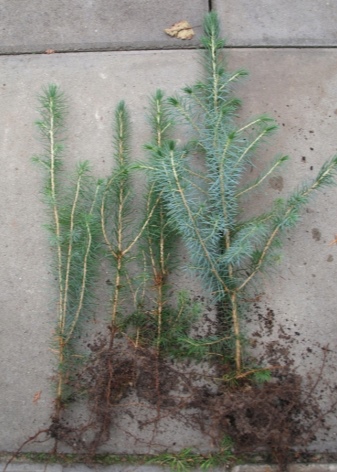
In the first case, the Christmas tree will have to be planted as quickly as possible so that the root system does not have time to dry out, and during transportation to the planting site, the roots should be moistened.
Landing
When choosing a place for planting Serbian spruce, you should take into account its size in adulthood. It is desirable that there is nothing superfluous over the crown of the seedling - plants, buildings, crossbars. Adequate illumination of the landing site is an important but not decisive criterion. Although even shade-loving plants love the sun and space. Do not plant spruce in wetlands - too wet soil can destroy the root system.
For the rest, ate is absolutely picky about environmental conditions, the main thing is to plant them correctly from the beginning. Small seedlings can be planted in a pot. You can slightly improve the quality of the soil for the seedling - for example, add lime to the acidic soil, strengthen the loose soil with clay, and dilute the heavy soil with sand.

Seasonal spruce planting - spring and autumn.
The process of single planting of Serbian spruce seedlings is as follows:
- you need to prepare a pit, lightly fill the bottom with sand and rubble to get drainage;
- set a seedling with neatly spread roots in the center of the pit, carefully cover it with soil (you can add sand and peat);
- it is important to leave the root collar flush with the ground;
- now you can water the plant.
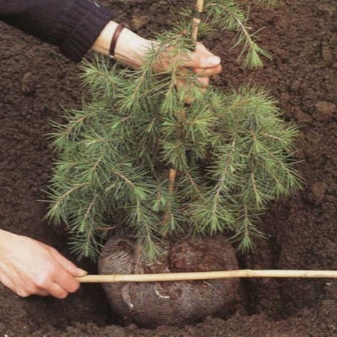

In the event that spruce trees are planted in groups, the distance between them should be measured, depending on the variety:
- the distance between dwarf species is 50 cm-1 m;
- enough space for medium-sized varieties - 3-5 m;
- large specimens will do well within 5 m of each other.
Note: the rest of the plants can be planted near omoriki, but taking into account that the falling needles will eventually cover the space around them. This can hurt some of the undersized neighbors.
Instructions for planting Serbian spruce in the video below.
Care
Taking care of Serbian spruce is quite simple. The main thing is to monitor the condition of the seedlings, in order to avoid diseases, water regularly, especially after planting, for 2-4 weeks. Then you can water less often, but more abundantly. One seedling takes about 10 liters of water. Adult specimens are watered at the rate of a bucket of water per running meter of a tree. The drier and hotter, the more often the crown needs to be irrigated.
The next important step in caring for Serbian spruce is feeding. It is of two types: root and foliar. There are special fertilizers for feeding conifers. In the process of growing spruce in the first two years, the soil in the root system is mulched and loosened.

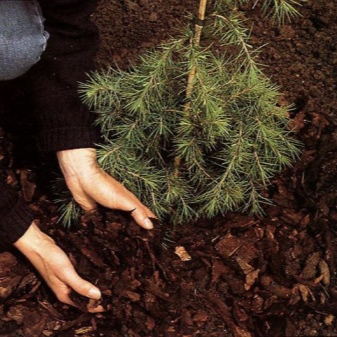
Then it is enough just to mulch the surface of the earth at the roots using pine bark and peat.
Another important factor in the care of conifers is pruning. In principle, Serbian spruce does not need formative pruning. However, a regular "haircut" does not hurt. This is done in order to free the tree from dry and broken branches and as a sanitary measure. You can also periodically clean the crown. The more rarefied it is, the easier and faster this procedure is.
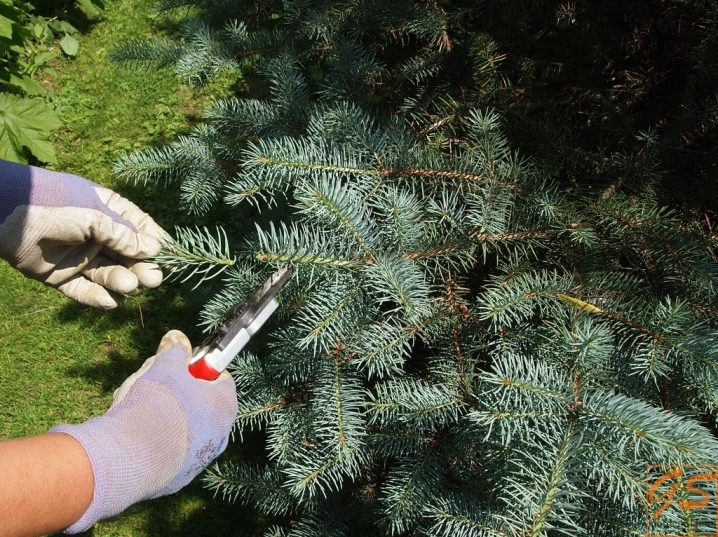
Particular attention is paid to decorative dwarf spruce varieties, which have a denser crown. Accordingly, the crown is put in order annually. If necessary, due to the presence of pests and diseases, the plants are treated with fungicides.
Reproduction
Ornamental varieties of Serbian spruce are not propagated by seed, as this is too time-consuming process. For cultivation, cuttings are used as the most reliable and proven method. It is better to deal with conifers in the spring - in April. Some gardeners postpone this procedure to fall and use a growth regulator. There is also a vegetative way of reproduction of the Serbian spruce, when grafting is done on an ordinary spruce.
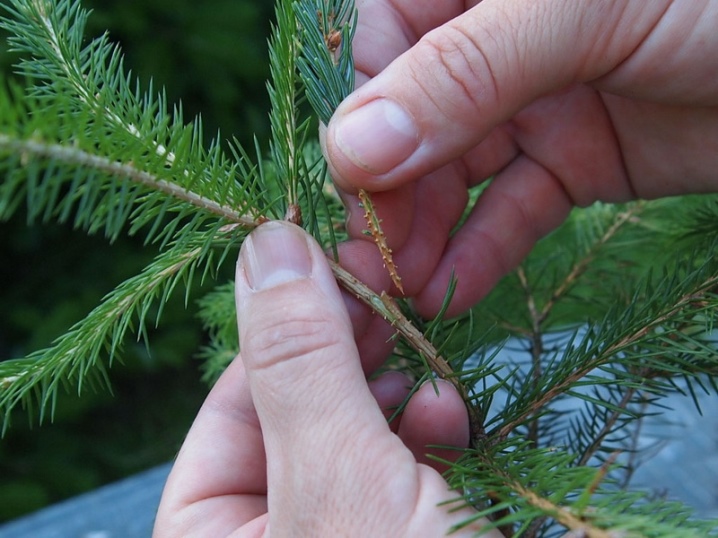
Diseases and pests
Conifers have a fairly strong structure. They ate well with many negative external factors, but sometimes they have to struggle with diseases for a long time. Basically, all ailments of conifers are eliminated with the help of fungicidal preparations. At the slightest damage, the near-trunk soil and the tree trunk itself are processed. Then the soil is well watered over the root system.
In the spring, at the beginning of the growing season, it is recommended to treat the crown with preparations with copper (spraying). Branches with foci of the disease should be removed so that the fungus and viruses do not move to healthy processes.
Preventive measures will help against diseases and pests. Important to remember:
- only healthy seedlings are suitable for planting;
- conifers should not be in close proximity to diseased plants;
- as the seedling grows, micronutrient fertilizers should be used for immunity;
- spruce should not be planted deep in the ground - the roots should be closer to the surface to get enough moisture;
- moisture deficiency is the main enemy of young coniferous plantings.
By adhering to these simple rules, you can help trees to gain ground in the ground and resist pests.

Use in landscape design
Serbian spruce looks great on any garden plot. Omorika ornamental varieties are one of the most popular ways of decorating and zoning a territory. These conifers are used in a variety of green compositions. Serbian spruce often becomes the main focus in landscape design.
Let's look at examples of how it looks.
- "Pendula Bruns" feels great in a vertical frame in a rigid garter. Without fasteners, you can get more bizarre trees.
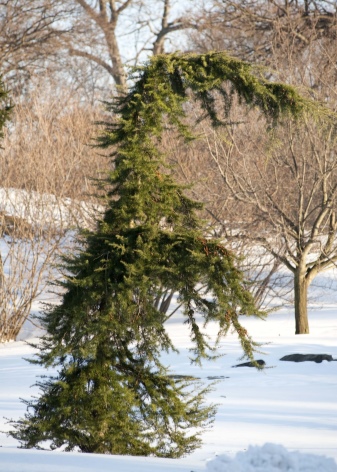
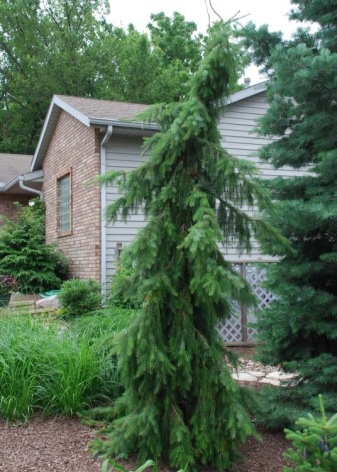
- To dwarf plants such as "Karel", "Wodan", "Pimoko" more requirements are imposed, since they are grown in flower beds and rock gardens.

- "Lindu" or "Zuckerhut" planted in the stalls. A "Jellyfish" and is completely striking in its appearance.

- Arrow-shaped crowns look best in gardens where the emphasis is on a group of trees. The spruce will stand out significantly among them.

There are many ways to decorate your backyard landscape with ephedra. In addition, they are good friends with each other.
You can also plant any other crops in the neighborhood that require the same rare but abundant watering as the Serbian spruce.
By winter, the culture can not be covered if it is not young plantings. It is worth noting that all varieties of Serbian spruce serve as an excellent source material for obtaining new species of such a popular coniferous culture.
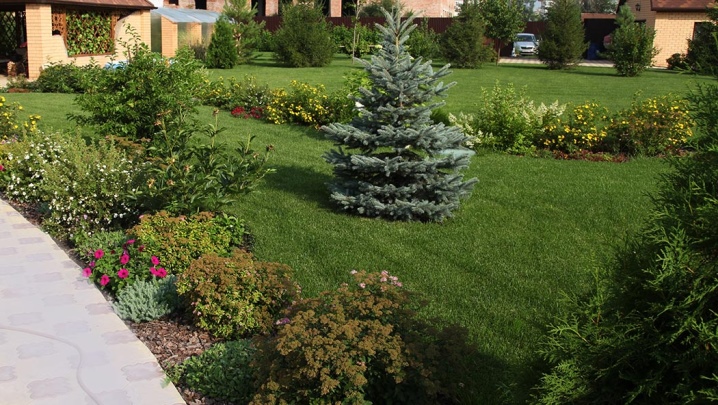



































































The comment was sent successfully.